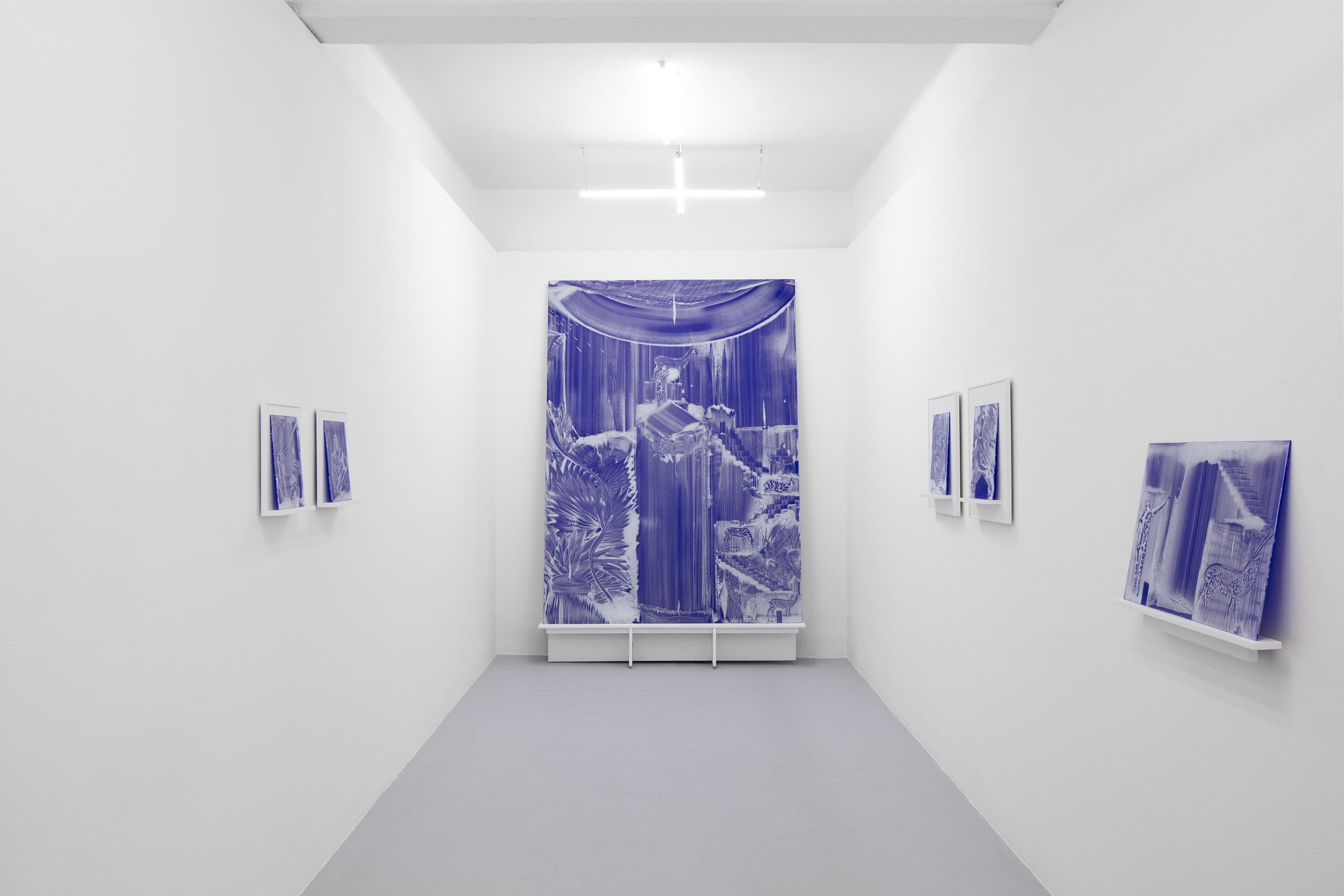
Review
In the Beginning Was Blue, and Blue Was with Black On “Señora Lapislázuli” by César Rangel at Galería Karen Huber
by Bruno Enciso
Reading time
5 min
César Rangel presents his first solo exhibition at Galería Karen Huber. This body of work features a selection of albigrafías, a technique developed by the artist himself, in which quartz dust—gathered from the surface of sandpaper—is bound into white markings using water and nopal cactus slime. These compositions traverse different imaginaries from the history of painting, drawing from cosmogonies across ancient cultures to reflect on the origin of the universe. Zooming out, we are left with just three elemental colors: blue, black, and white. Minimal elements rehearsing a transtemporal vastness. There’s a tension between the instinct to read these images and the singularity of their bold, high-contrast visuality. The viewer is asked to sit with this tension in order to perceive the other operations shaping this cosmic journey.
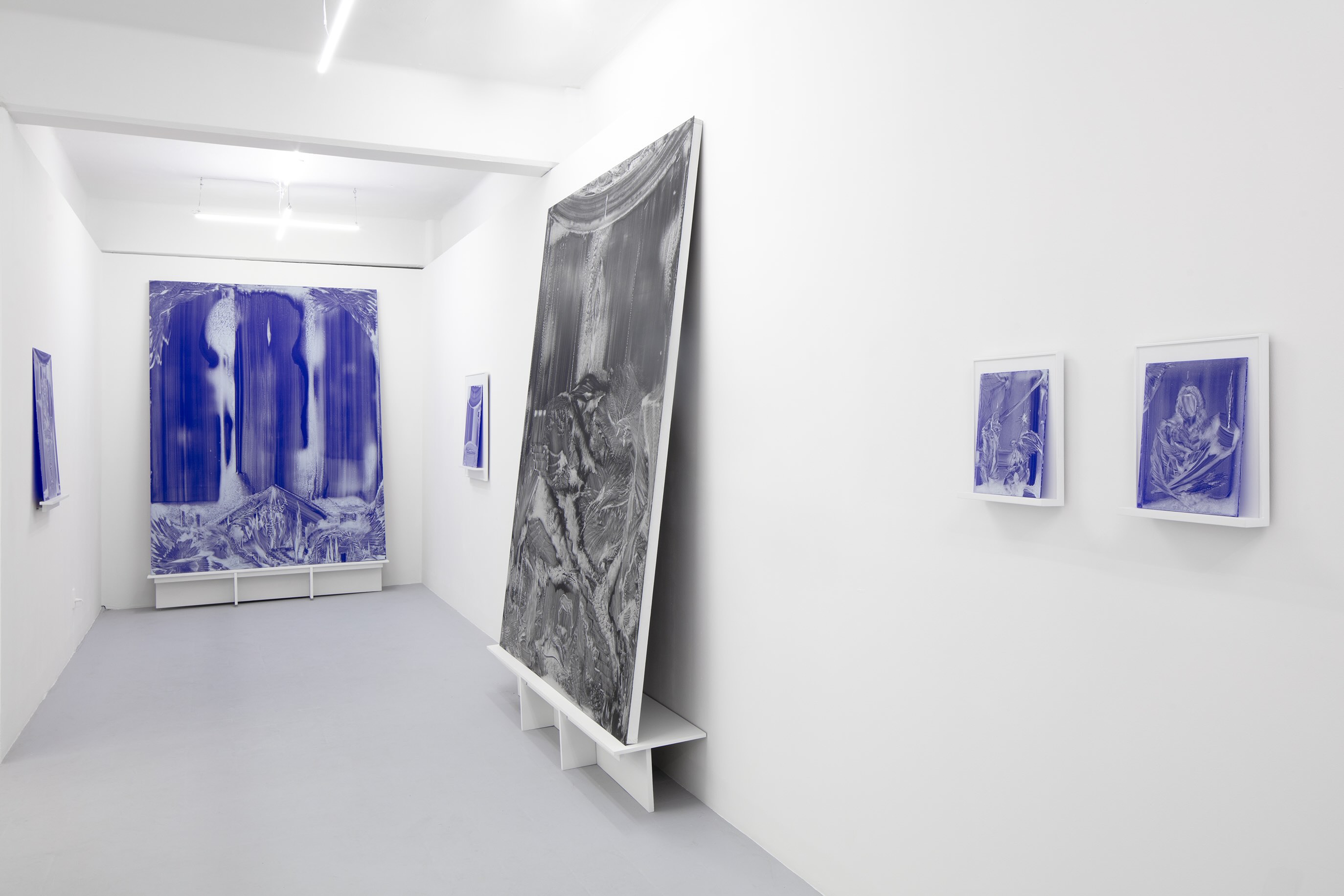
One of the exhibition’s most conceptually rich formal choices is the custom-built bases for each piece: they function as shelves, presenting each work at a slight tilt. The act of placing each plate evokes the gesture of arranging an altar—positioning the image in the precise site of its veneration. There's even space for a slender candle or a few crystals. The tilt is also significant: it lends the accumulated dust a saline-like quality, as if it clings to its support, preserving a sense of motion, the deviation of an axis.
Señora Lapislázuli 3 is a large-format work that almost entirely fills its assigned wall. The image contains motifs that mark its upper corners, reinforcing a sense of multiple framings: by the gallery’s architecture, by the edges of the piece itself, and by its own internal logic. One must also consider how the blue plate rests atop the shelf that supports it. Delicately coordinated, these elements create the conditions that anticipate the significance of whatever appears at the center of the composition. And what do we find? A tripartite threshold that doesn’t quite resolve into any fixed form. There is no void, but also no explosion of chaos. At best: possibility. A haptic stimulus that makes the dust viscous once again.
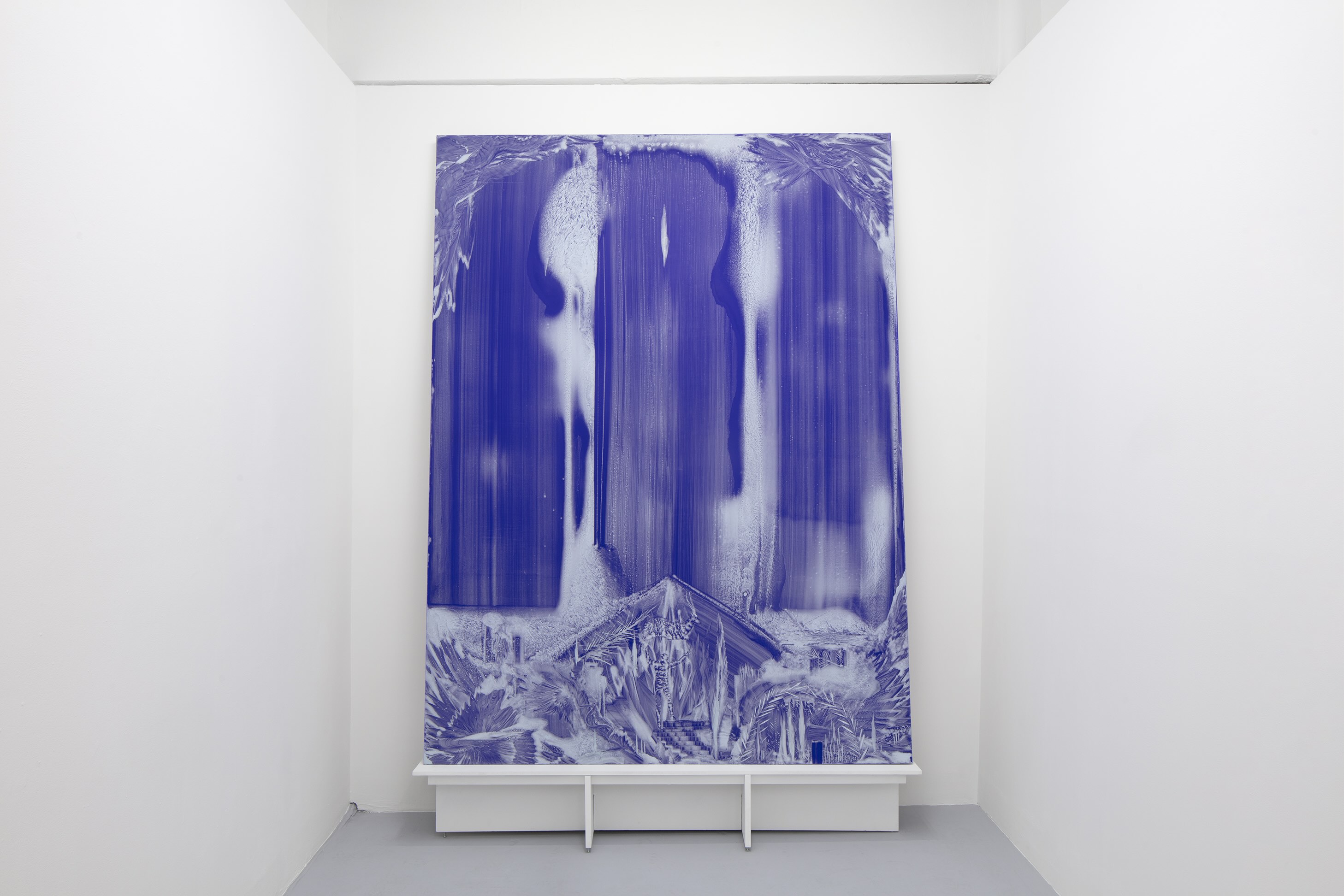
I highlight this piece and the vagueness of its threshold as a space available for sketching a future. But let us proceed with caution. I don’t believe we should invoke a hopeful impulse to uphold every possible future. Precisely because this is a threshold, we cannot assume all ideals will flourish equally. The other works in the show argue that even when a scraped line—drawn by some sacred force—manages to produce a flash of truth, it also carries a material enigma that reveals its fragility.
Its semantic flesh cannot come solely from the expertise of a text or from whoever chants it; it is also born of the unexpected reaction between discrete elements, intuitively sensed as complementary. In this sense, the future is not something to be awaited or longed for. Nor does it imply proposing a system of interpretation. Rather, it involves a sensitivity that experiments with new mixtures and slowly chews the signs that surround it.
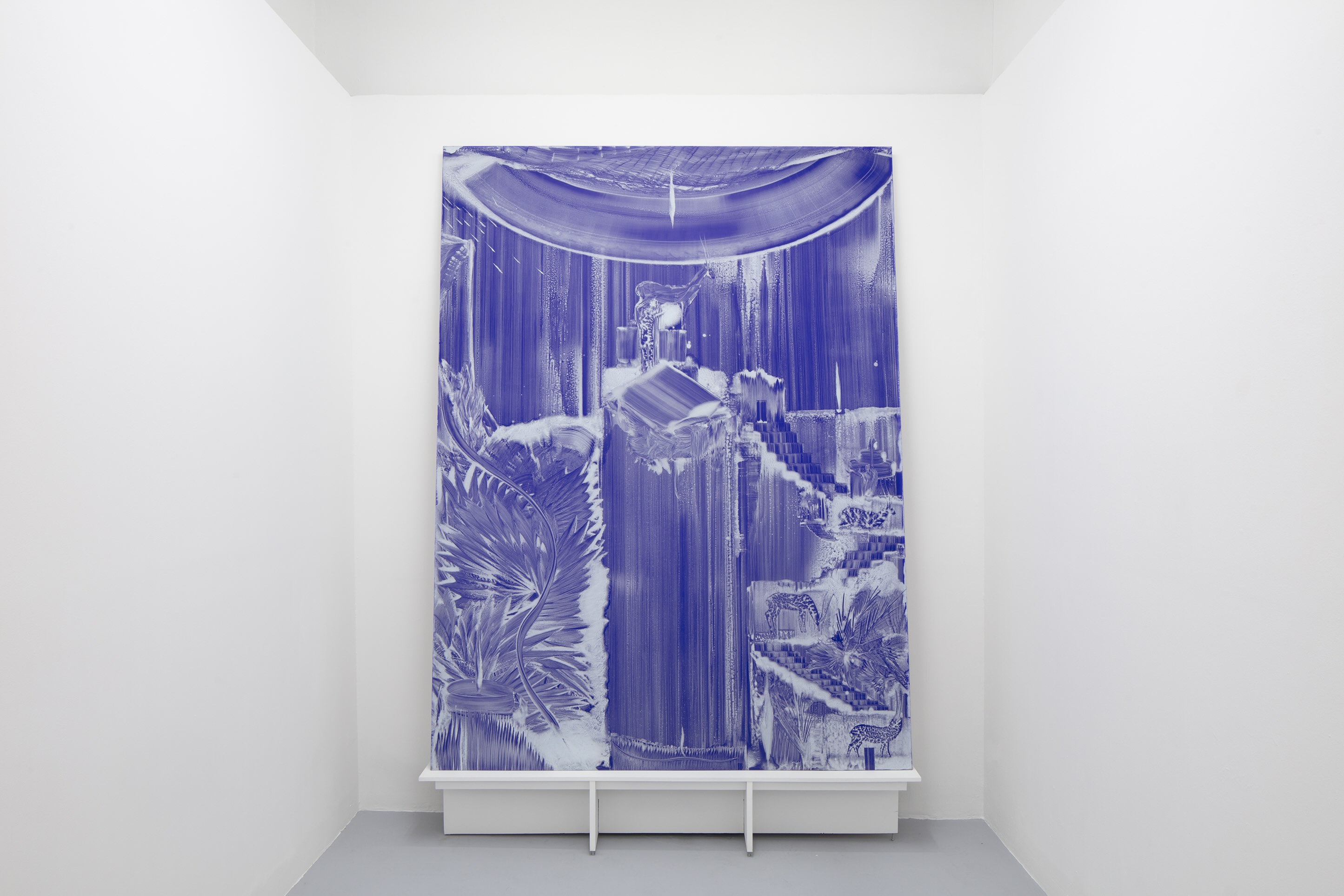
On the opposite wall, Señora Lapislázuli 2 faces off against No. 3, its equal in size, presenting a scene populated by distinct silhouettes. Deer and humans parade across architectural volumes connected by staircases, forming the impression of a temple. Together, they constellate a remote poem that might delight hypothetical philologists or specialists who persistently braid technique with belief. Unlike its counterpart, this piece doesn’t mark the corners, but a sacred, cloak-like curve crowns the upper edge of the image: it adorns it. The background detaches from the figures—what was once a threshold becomes sky, air. The contrast in narrative dynamics between these two works is softened by their shared materiality. In their interplay, any potential contradiction surprisingly dissolves. I wouldn’t say they strike a balance, but they do display multiplicity.
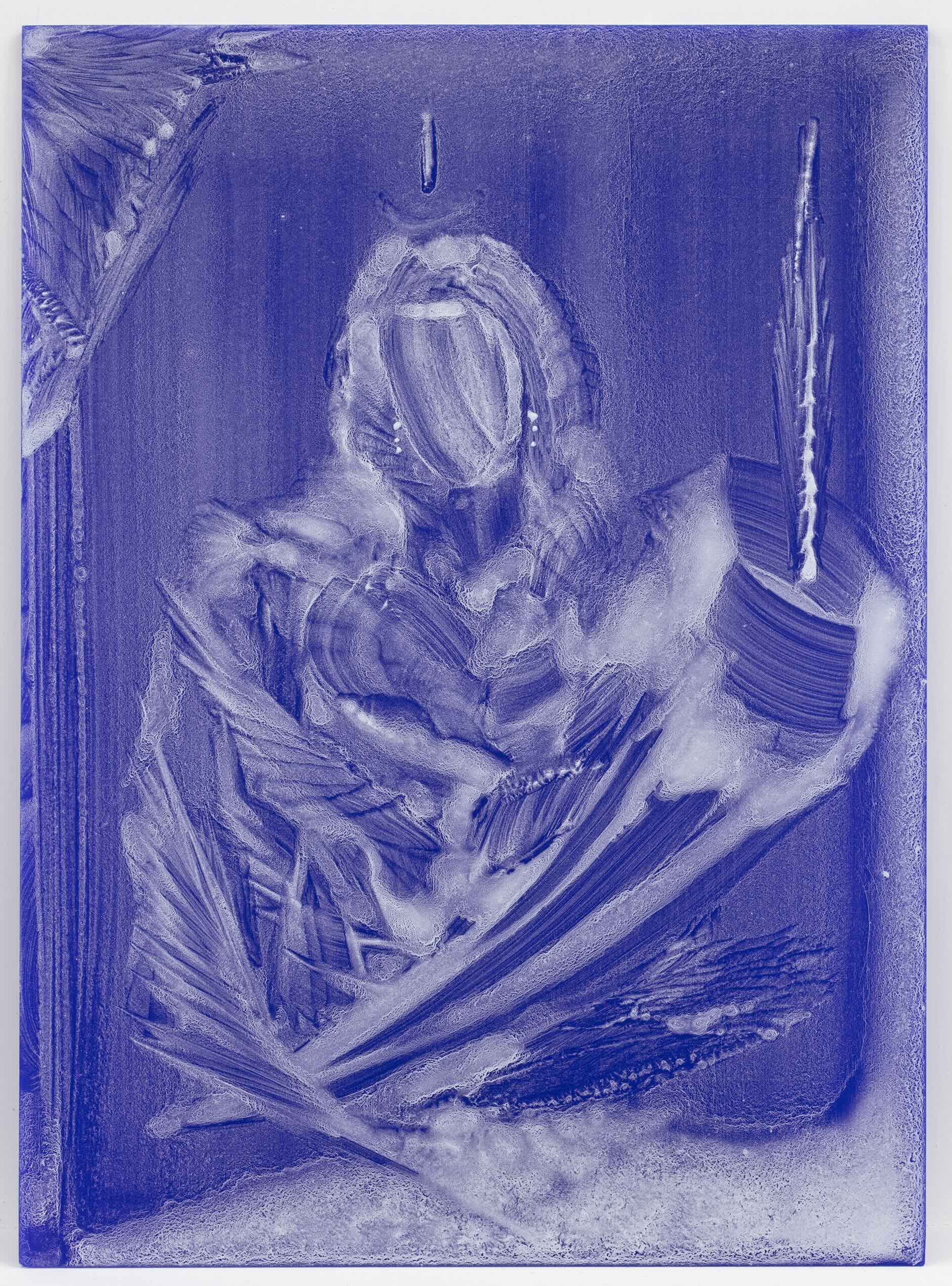
Creating a new technique doesn't necessarily mean the artist deserves credit for pure innovation—at least not as a value judgment on the work. As viewers, it’s worth resisting the pull of novelty to instead pose as many questions as needed around the functioning of this visual language, which asserts its own autonomy. The case of César Rangel’s albigrafías is especially compelling because his inventiveness is clearly not in service of mere provocation. Instead, these works—each on its own and as a collective—seem to give form to a set of formal and conceptual inquiries about what it means to make an image appear. A sharp investigation into the idea of “revelation” emerges here, evoking not only its theological connotations but also its photographic ones—two notions deeply entangled with the intensities of drawing and painting. The sincerity of this inquiry prevents the exhibition from becoming a showcase of neat, successful outcomes to a naive experiment. In fact, it invites curiosity about future iterations. I doubt those will be limited to albigraphic translations of painterly imaginaries.
The exhibition runs through June 7.
Translated to English by Luis Sokol
Published on May 23 2025